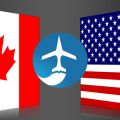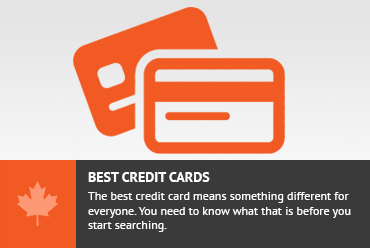Overview
John wants to find out what the best way to manage his spending in the US. He gets some income in US Dollars every year and that covers his annual spending in the US.
In this article I’ll go over a few options that a Canadian might have for spending in the US or spending US Dollars.
Question:
Hi Al,
I have a question for you. I spend about $5000 a year while vacationing in the US. Should I get a Canadian US Dollar credit card to avoid the transaction fees? I always have US cash on me so paying that is not a problem. I get some money every few months in USD from overseas business.
What is the best card to get when it comes to US spend for a Canadian? Should I keep using my Canadian credit card in CAD or should I get a US Dollar credit card?
Thanks.
John – Thanks for the question. I will do my best to answer your question. I am going to approach this giving you the options that I think you should consider and link to the solution that I Think makes the most sense.
Quick Answer:
For most people, I think the best option would be to get the best US Dollar card from a Canadian bank.
- For high spenders, get the RBC US Dollar Visa Gold
- For lower fees, get the BMO US Dollar Mastercard
See the Best US Dollar Cards for Canadians.
Detailed Answer
Options
I believe there are really 3 routes you can take to solve your problem
- US Dollar Card from Canadian bank
- US Debit card associated with US based bank / US based bank account
- Canadian Dollar Card from Canadian bank
| Pros | Cons | |
|---|---|---|
| US Dollar Credit Card for Canadians | Ability to currency speculate (ie buy USD when CAD is strong, but spend USD when you want) No foreign currency fees |
Annual Fees (may be minimal) Need US Dollar bank account / trade cash when you need to pay the loan Need workarounds for US billing address (online ordering) |
| US based bank account with a debit card | Real US bank (good for transacting while in the US) Instant spending / debit (simplicity) Real US billing address |
You have to go in person to the US to get it No ability to interface with Canadian bank (potentially) Using debit, not credit, thus loss of credit card protections Minimum bank account balances to waive bank acount fees |
| Canadian Dollar credit card from Canadian bank | No new work required (ie just use the Canadian card you are using) Simplicity of finances |
Transaction fees (% of the charge for foreign conversion) No US Billing address (for online orders) Paying spot exchange rate on date of consumption (no ability to currency speculate) |
Option 1 – US Dollar card from a Canadian bank
The main reason to go this route is that you can keep all of your accounts in USD without losing anything to transaction fees. If you earn some money in USD and you have some spending in USD, then you can keep it all in USD without losing.
The bigger benefit, assuming you have a USD bank account, that I have experienced is that you can trade CAD for USD when you think that USD is low and spend those USD when you like. People who bought USD for general consumption with their CAD in 2011 when there was parity are able to be somewhat immune from the exchange rate fluctuations.
Now, there are annual fees which you have to worry about. You also have to worry about the fees for holding a USD bank account at a Canadian bank. These can be small if you have a good banking relationship.
Cards to Consider
My thoughts for your situation is that you should get the BMO US Dollar Mastercard, as you would basically get it for no annual fee, given your spending. If you have a relationship with a single bank, then you may have more convenience by keeping your US Dollar accounts there. As I mentioned in the article on the best US Dollar card for Canadians, dealing with US Dollar accounts with different institutions is not as easy as it is with Canadian dollar accounts.
As I mentioned in the article,
- For high spenders, get the RBC US Dollar Visa Gold
- For lower fees, get the BMO US Dollar Mastercard
I do not believe that you should change your banking relationship for this purpose given the small amount of spending you do.
The main problem here is that you will have a Canadian bank account denominated in US Dollars, not a US based bank account. You will not have a US billing address by default and you will not be able to pay this credit card bill as easily as you would pay either a Canadian credit card bill (from a Canadian bank) or a US bill from a US bill pay service.
Option 2 – 2. US Debit card associated with US based bank / US based bank account
Another option that is very good for many Canadians is to set up a bank account at TD Bank (US), Key Bank or Bank of America or First Niagara Bank etc. on the US side of the border. You will need to go in person to set it up because you likely don’t have a US Social Security Number.
How this debit card works is that similar to Canada’s interac system, the US debit system simply is an overlay on VISA / Mastercard debit systems. Each bank account will come with a “debit” card with a VISA or Mastercard logo. When you swipe your card, it is like interac and your account will be debited.
The real benefits here are that you can set up the account in a US bank and then pay various bills in the US and you get a legitimate US mailing / billing address. This makes your life so much easier if you are ordering things online.
The major drawbacks are that you are using debit, so you lose all your credit card protections, including insurance and many chargeback protections. The other issue is that almost all US banks will not interface with Canadian banks. Moving money around may be more difficult. TD Bank in the US does interface with TD in Canada, though so if you bank there then this will not be a problem.
You also will want to manage your bank account being mindful of the minimum balances and fees. Almost all banks offer a free account with a minimal balance or minimum amount of transactions.
This is a good option if you do a lot of online purchases in the US, and if you bank with TD (since they have this solution figured out well). Also, if you have any intention of moving to the US at any point, this will help that process.
Option 3 – Canadian Dollar Card from Canadian bank
The simplest option is to continue using your Canadian dollar credit card for your purchases in the US. Most Canadian cards tack on a foreign transaction fee of about 2% – 2.5% of the transaction in a foreign currency.
I believe that there are only 2 cards in Canada / Canadian dollar cards that will not charge a foreign transaction charge on purchases in USD. Those would be:
- Chase Amazon.ca
- Chase Marriott
The Amazon.ca has no annual fee and returns ~1% return so you are actually ahead after accounting for the forex fees.
The real problems with this route is that you are stuck paying the rate on the day you make your purchase. If the CAD happens to tank for the week that you are on vacation in the US, you are stuck at a loss.
Also, for the online orders you are going to struggle getting a US billing address.
Summary
That all being said, I think your best bet is to get the best US Dollar card you can get from your bank.
Here are your options:
- US Dollar Card from Canadian bank
- US Debit card associated with US based bank / US based bank account
- Canadian Dollar Card from Canadian bank










